Happy Sunday to All! The last Sunday of January, this wonderful and prosperous new year 2018, we are in the final days of a visit from my father and grandfather to our little part of South America. They have come to see and experience, the best they can, our lives and lifestyle here living in a small rural town in Colombia.
This isn't the first visit for either of them, in fact it is my Grandfather's fourth visit here, but due to the rapid biological growth in the tropics, and our continuous efforts, there are new things to see each time.
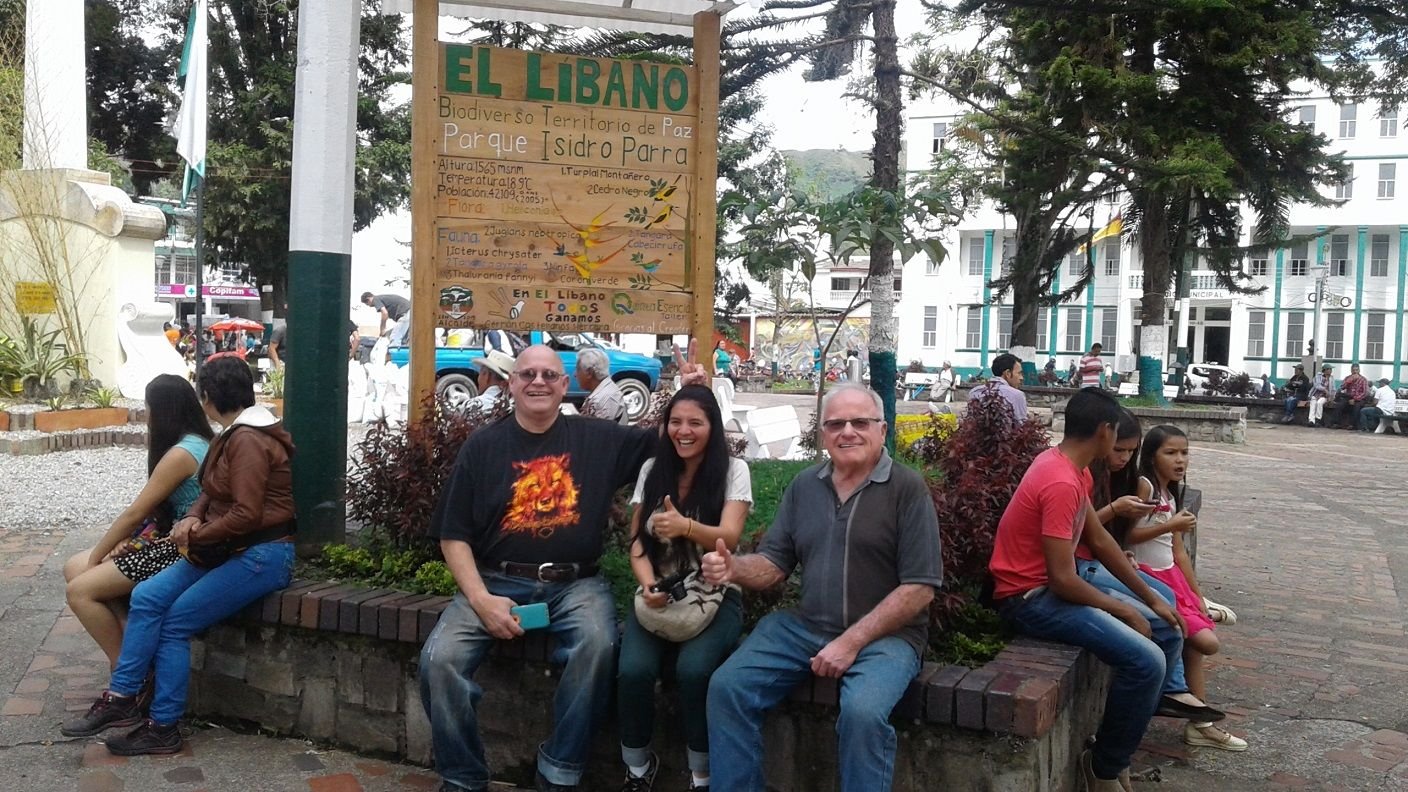
Since the last visit, we were hired to install a sign in the central part, written about in Sustainably Developing Communication. This sign serves as a great 'jumping off point' for tourism, as well as a photo opportunity!
Líbano continues to recieve more and more tourism, but it is still an extremely small amount compared to more main stream destinations, even in other parts of Colombia. Part of this isolation is caused by geography, and although it has (so far) reduced the benefits of tourism, it has also protected our area from the ravages of tourism. Balancing the pros and cons of tourism, and trying to invite the 'right' kind of tourism, is a challenge that many developing areas are facing.
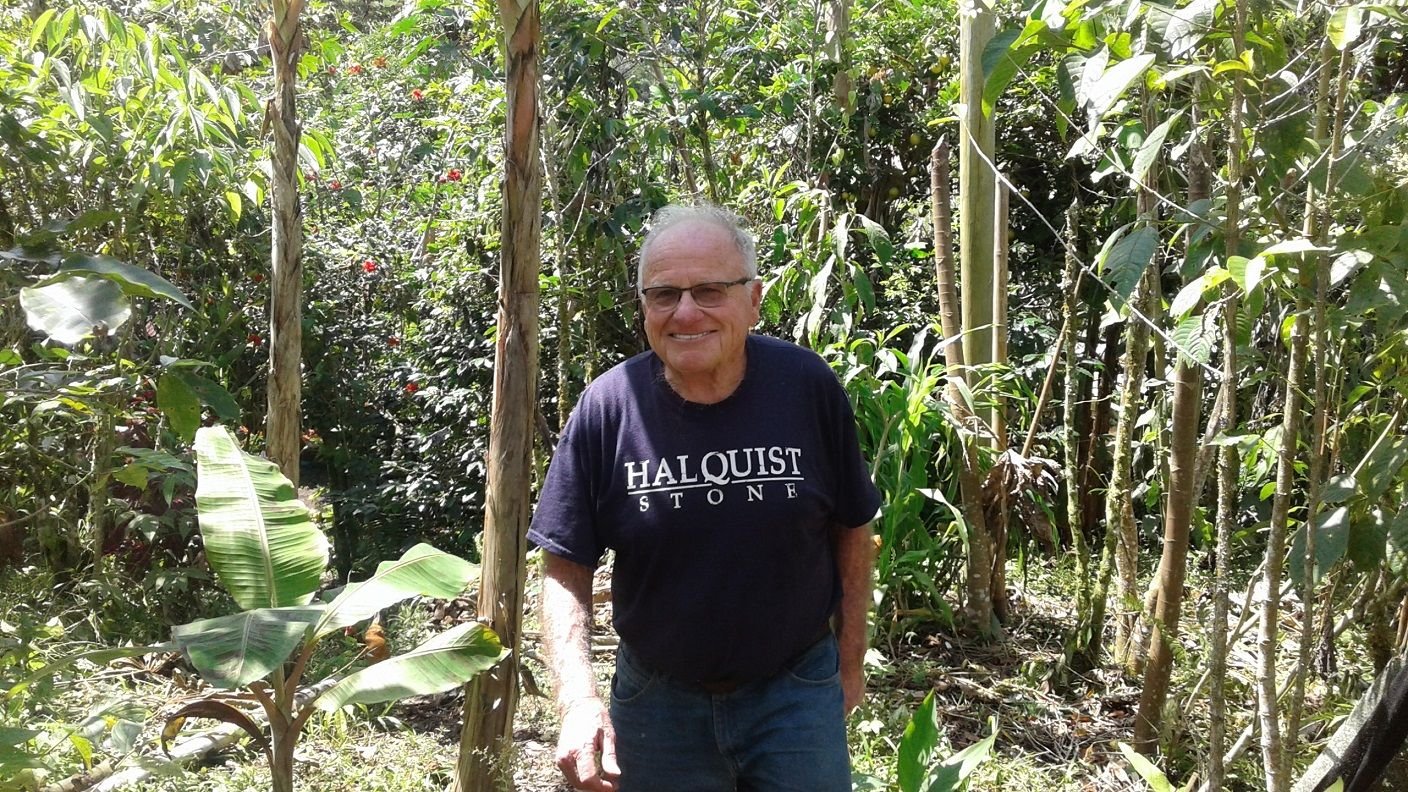
One of the challenges to showing off our work and farm is the topography. Making clearly delineated paths is very important, especially in areas with very steep slopes. Tourists are naturally curious, and can have trouble staying on paths that are not well marked. These tourists are particularly well behaved, but they are helping us better understand, with every visit, the important issues involved in preparing a property for tourists.
As shown in one of my very first articles on the Steem blockchain, Intercropping Agroforesty 'Food Forest' systems, it can be very dangerous for anyone who doesn't know how to walk on our steep slopes to just 'wander around'.
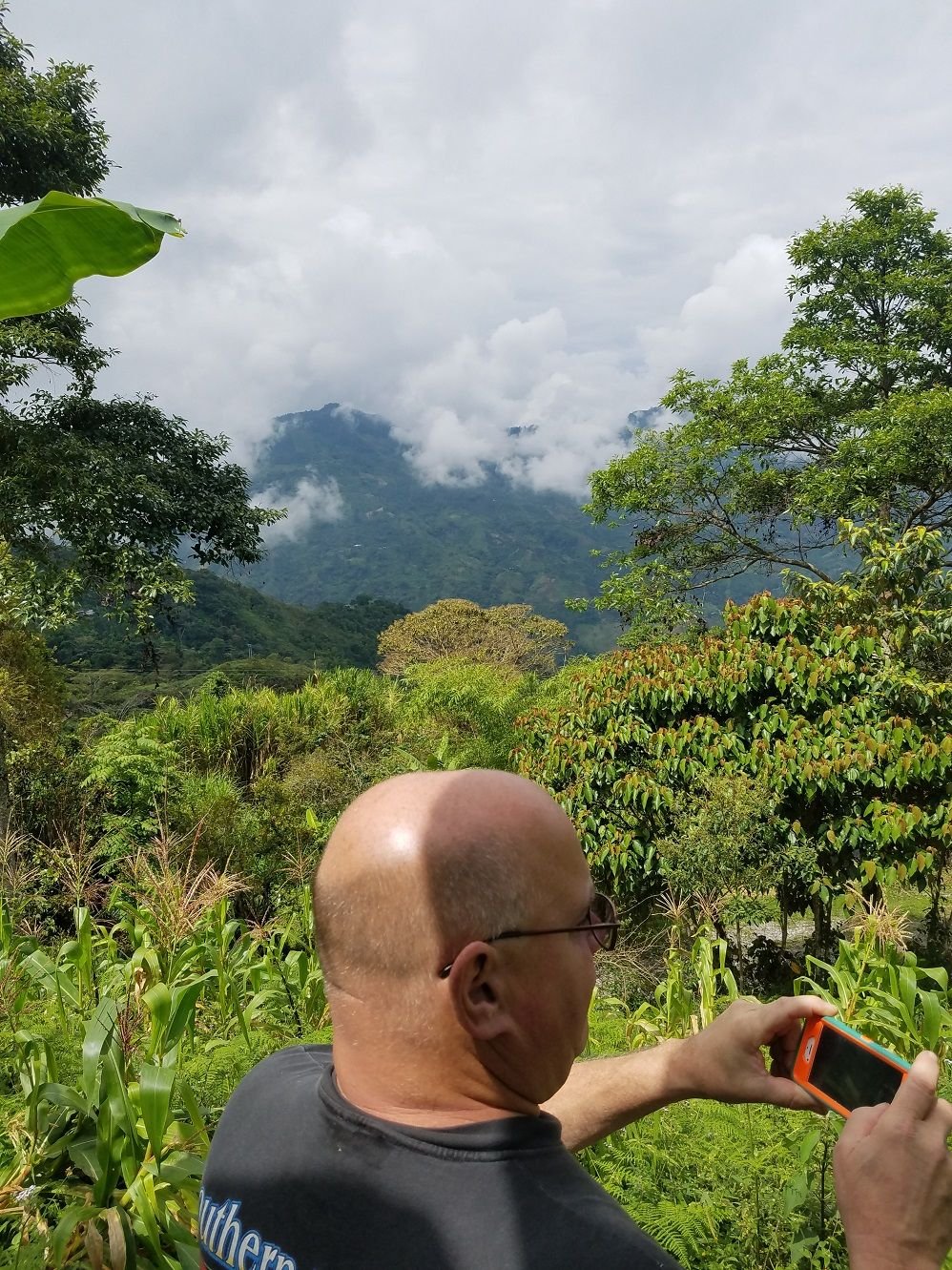
But Agroforestry Systems are so photogenic! They call out to be explored, and any tourist can hardly resist, especially when tropical montane forest is a new ecosystem for them. The layers of tall trees, fruit or dwarf trees, bushes, grasses, herbs and other commercial crops are very appealling to those accustomed to seeing hundreds of thousands of flat acres of cultivated corn crop.
These systems grow and evolve over time, they are four dimensional and complex. These are also their attraction; when every plant and built structure serve multiple functions, when every placement and every design choice have a story behind them, we can talk for hours to new-comers and visitors without repeating ourselves.
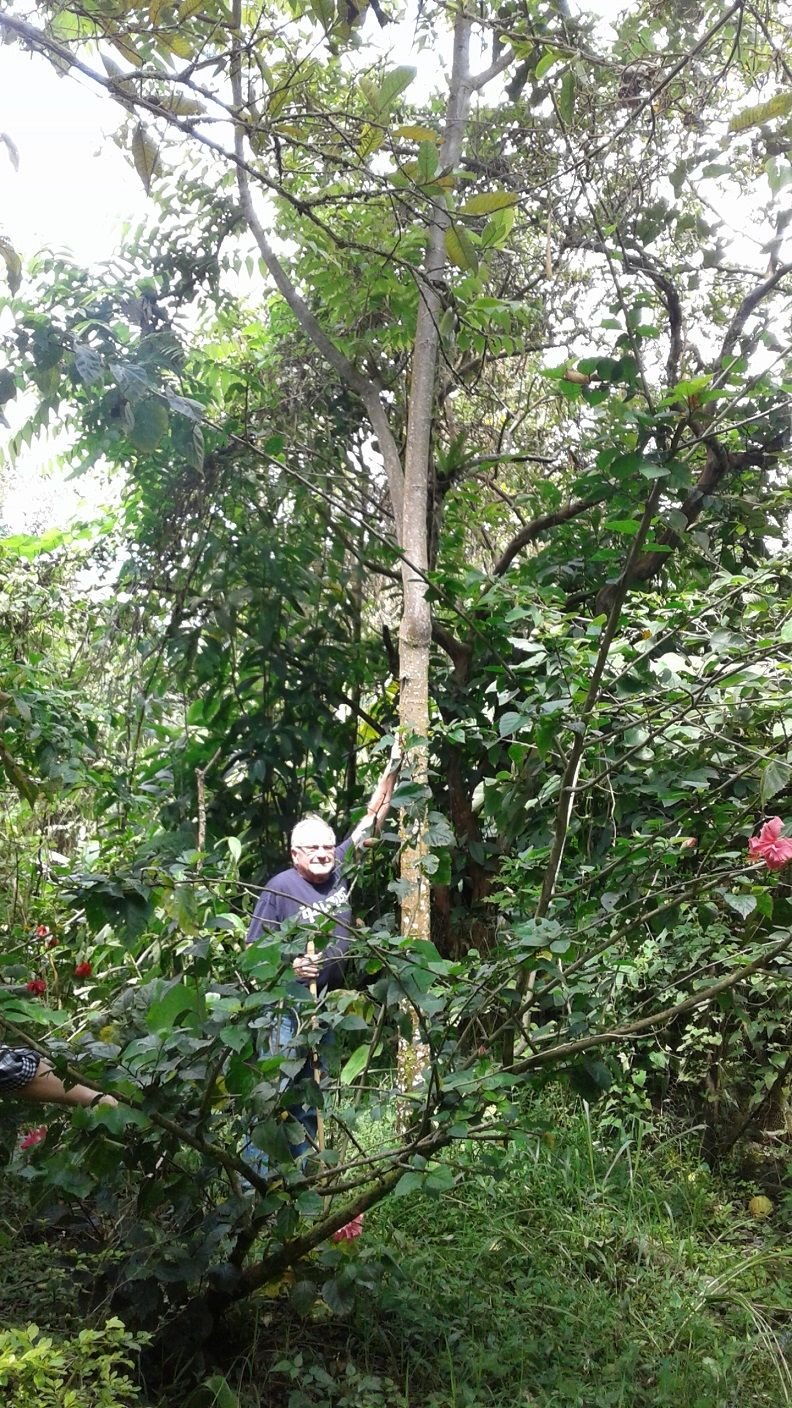
One of the great parts of learning agroforestry systems in the wet tropics is that everything grows so quickly! The Andean Walnut (Juglans Neotropica) is a native species that has been endangered by habitat loss. Above we can see an example of a tree that was carried to the farm in a bag and planted just over four years ago.
Not all areas can be reforested and agroforested at the same rate. Certain areas that have been poorly treated (below you can see an area that was slashed and burned almost three years ago) can take longer to get started, as the soil life cycle recovers, or even gets started again.
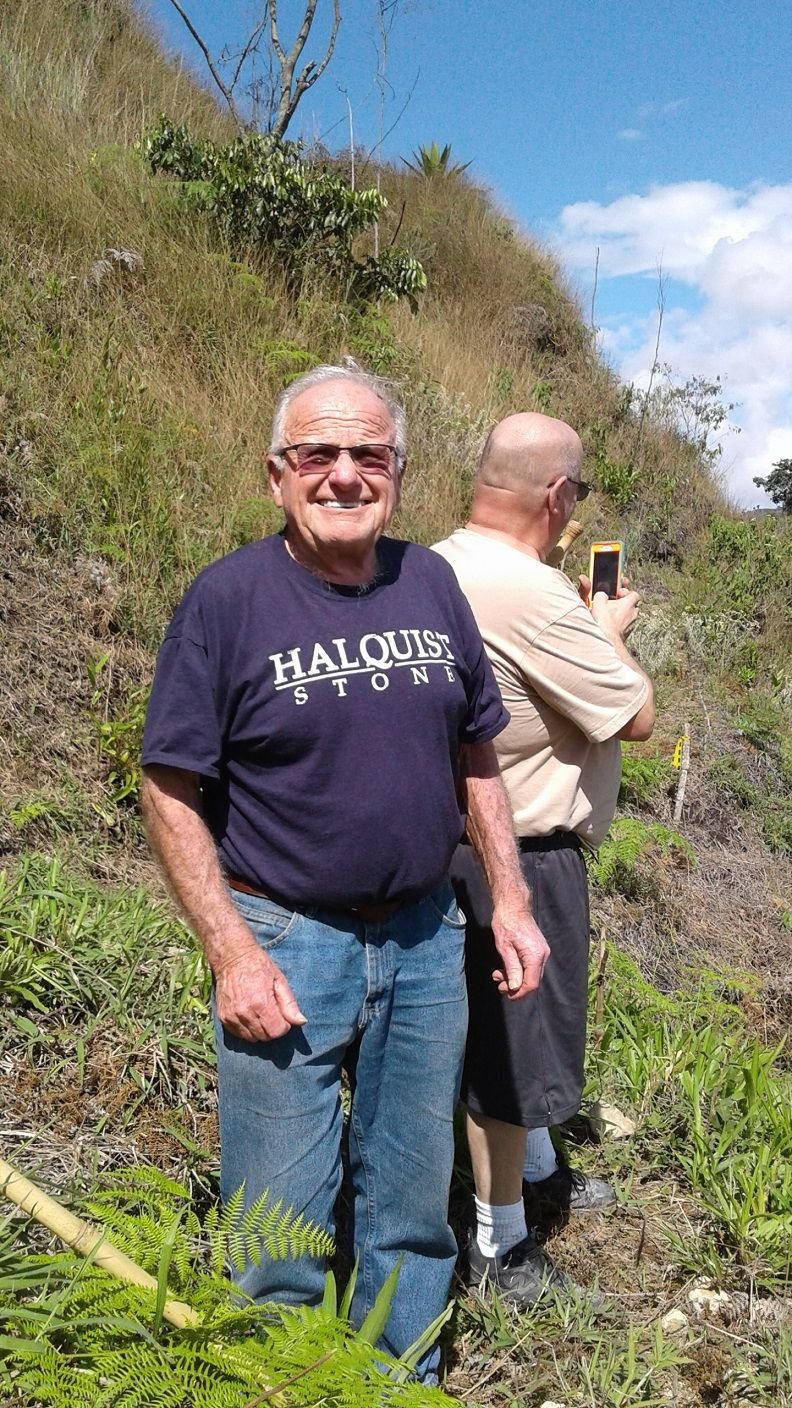
Exploring nature can be a sustainable activity; as long as the sites and the routes have been well designed and thought out. Each of us can get better at designing and implementing more sustainable strategies into our lives, places, structures and families; there is great information available on the internet under the heading of keywords like permaculture, homesteading, ecology, sustainability and agroforestry.
That said, the sustainability of tourism can never surpass the sustainability of the place itself; adding more people to an unsustainable situation is like adding leverage to a failing business. Unlike on our farm, where the 'buck stops with us' so to speak, there are many community issues far beyond and above our control or even our sphere of influence. Some of these issues that affect Líbano, or any rural, urban, developed or developing space, will and do affect the tourism to the same place.
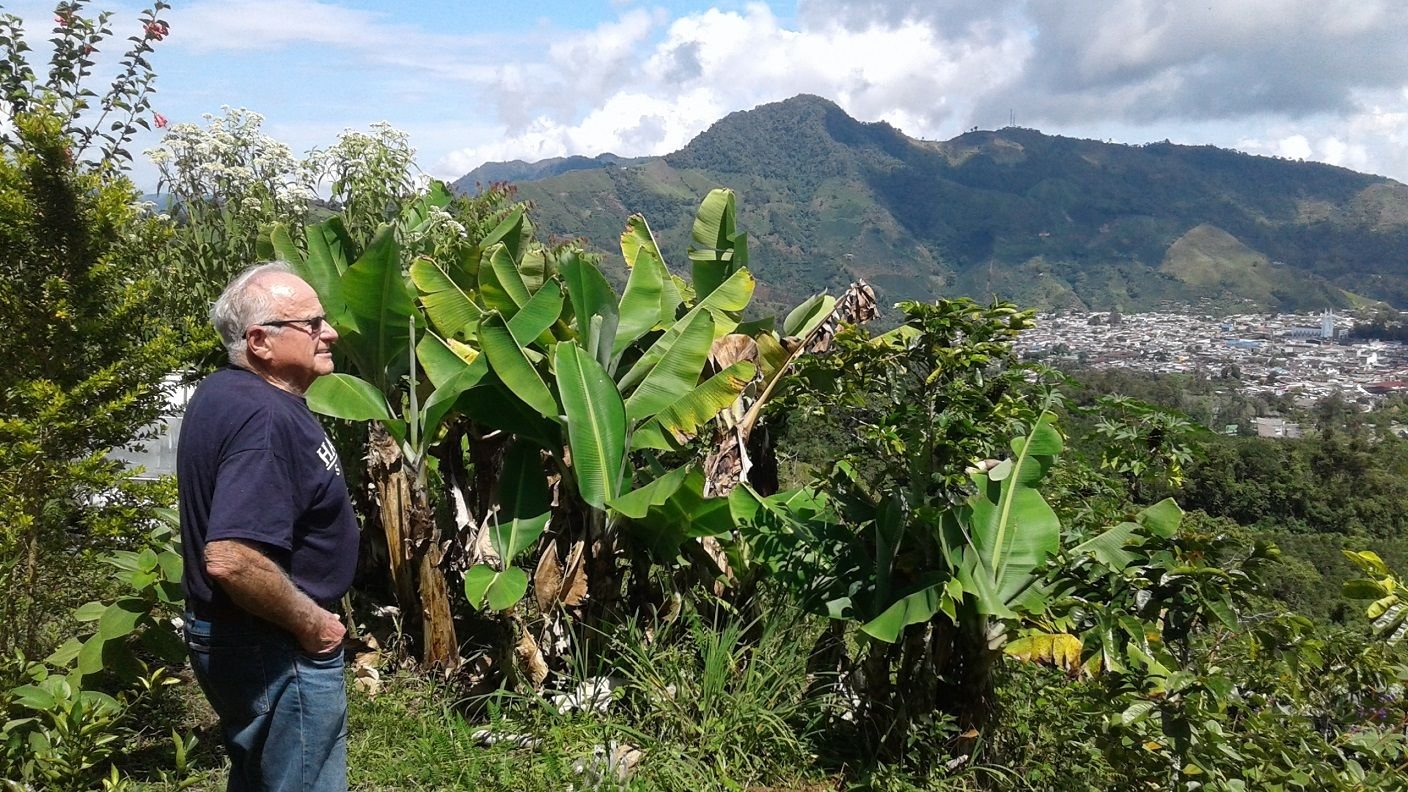
Thank you for reading! Please leave your thoughts, questions and/or concerns in the comments below. Blessings to All, Love and Light for this Prosperous Year!

Want to make the world a better place?
Interested in interacting with people who write about making it a better place?
Check out #ecotrain!
